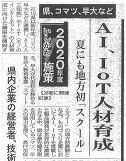Ivar Jacobson, Harold “Bud” Lawson, Pan-Wei Ng, Paul E. McMahon, Michael Goedicke 著, 角征典 訳, 鷲崎弘宜 監修, “モダン・ソフトウェアエンジニアリング” (原題: The Essentials of Modern Software Engineering), 翔泳社, 2020, ISBN:9784798165226
機械学習工学やIoTソフトウェア工学など、DX時代を迎えるにあたり様々な手法やプラクティスが現れようとする今こそ、変わらない本質をEssenceに学び、ソフトウェアエンジニアリングに必要な変革を自ら組み立てていく取り組みが求められます。私自身まさしくSE4BSプロジェクトにおいてそれに取り組んでいるところであり、本書は実にタイムリーでした。これからのソフトウェア開発を担っていくすべての皆様におススメしたい一冊です。


